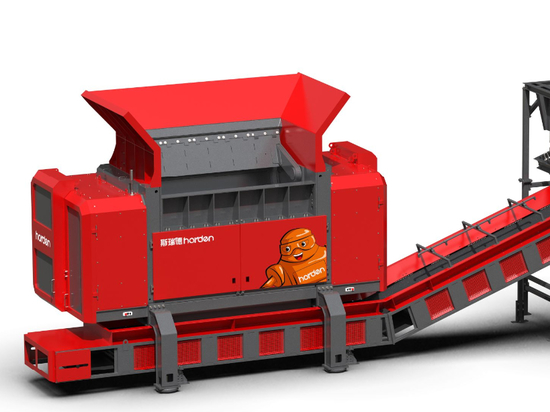
#Industry News
Let’s talk about the reasons behind the global popularity of biomass blending - industrial-level biomass pretreatment technology
In the next few years, coal-fired power plants will usher in a profound green revolution. Its core task is to achieve energy conservation and emission reduction in the production process.
In the next few years, coal-fired power plants will usher in a profound green revolution. Its core task is to achieve energy conservation and emission reduction in the production process.
The specific goal is to incorporate at least 10% biomass fuel into the existing coal-fired system. This transformation not only responds to the urgent global need for environmental protection and reduction of carbon emissions but also marks a move towards more efficient and cleaner coal utilization.
So how should coal-fired power plants achieve this goal, and what are the ways and methods to better transform them? Let’s take a look at what technologies are behind the explosion of biomass mixing and combustion.
01 Positioning of Biomass Materials
Before starting a biomass blending transformation project, the first task is to clarify the type and form of biomass fuel.
①Which biomass type to choose?
Agricultural and forestry waste such as straw, garden waste such as tree branches, kitchen waste, etc.
It is generally selected based on the yield of local biomass resources to reduce transportation costs and environmental risks.
②Should I choose fine chips, granules, briquettes, or wood powder?
Each type of fuel has its unique physical and chemical properties, as well as blending efficiency and pretreatment cost, which will directly affect the design and implementation of subsequent transformation programs, striving to use more economical pretreatment technology with minimal investment. Achieve maximum benefits.
02 Diversified Options For Biomass Blending
After the explosion of domestic biomass blending, it is now in a technological explosion stage. Various biomass blending technological transformations have entered the field of vision of domestic coal-fired enterprises.
This stage is very similar to the industry development in Europe around 2000. We can get corresponding inspiration from the biomass blending paths adopted by European countries.
①Direct mixed combustion technology. This technology directly mixes pretreated biomass fuel with pulverized coal and sends it to the furnace for combustion.
This is the biomass blending method mainly used in the UK, and it is currently the only country that has achieved the transition from large-scale coal-fired power plants to biomass-fired power generation to 100% pure biomass fuel burning in large-scale coal-fired power plants.
②Indirect mixed combustion technology converts pretreated biomass waste into biomass gas through a gasifier, and then injects it into a pulverized coal furnace to achieve mixed combustion.
Germany is a world leader in biomass gasification technology. It has promulgated the Renewable Energy Law (EEG) and provided clear subsidy policies for biomass gasification power generation.
③Biomass-to-methanol production uses biogas generated from agricultural and forestry wastes and kitchen waste to produce biogas through biomass gasification, and then reproduces it into methanol products.
This type of product has negative carbon emissions and is currently the most environmentally friendly "zero-carbon" energy source. Sweden has the world's largest biomass green methanol production line.
03 Pretreatment Technology For Biomass Blending
After selecting the biomass raw material and blending path, there is another key to the success of biomass blending: biomass pretreatment technology.
Since biomass raw materials come from many sources and have complex components, no matter which blending path you choose, the biomass needs to be pretreated firstly to improve the efficiency and effect of biomass blending.
Harden-Industrial Grade: Biomass Resource Pretreatment System
After in-depth market research by Harden, it was found that: At present, traditional biomass resource processing technology still faces many problems during pretreatment, such as poor material compatibility, inability to continuously feed, easy clogging of screens, insufficient production efficiency, etc.
Traditional pretreatment equipment can no longer keep up with the development pace of biomass blending, and better biomass resource pretreatment technology and equipment are needed.
Therefore, Harden has conducted various experiments on various types of biomass, such as straw, waste bamboo, branches and other raw materials with different water and humidity, and continuously improved and optimized the equipment to the "JUST SHRED IT, THUS SORT IT” concept, a biomass resource pretreatment system compatible with various biomass raw materials was launched.
[High Capacity] 10-20 t/h
[More Uniform Particle] ≤20mm; ≤30mm; ≤50mm.
Depending on the application scenario and customer needs, customized adjustments can be made, and the shredding particle size compliance rate reaches more than 95%.
[Lower Operating Costs] The equipment has a variety of innovative designs such as detachable screens, patented close-packed high-efficiency crushing cutter shafts, etc., to achieve lower shredding costs per ton and maintenance and operating costs.
Harden believes: "Biomass raw materials are regional, and the types and outputs of biomass in each region are different.
We can adapt to local conditions and combine complex and diverse biomass raw materials with Srid's industrial-grade biomass resource pretreatment technology.
On the one hand, it can actively solve the problem of local biomass waste disposal, on the other hand, it can save coal and reduce carbon, reduce corporate costs, thereby achieving a new ecology with both economic and environmental benefits.”
In the wave of green transformation of coal-fired enterprises, biomass is a new energy source that saves energy, reduces carbon and accelerates the construction of clean, low-carbon, safe and efficient energy.
It is an important force in achieving the strategic goals of carbon peaking and carbon neutrality in the industrial field. It is also an important force for the future utilization of biomass. Renewable energy power generation is one of the important ways to solve energy shortage.




